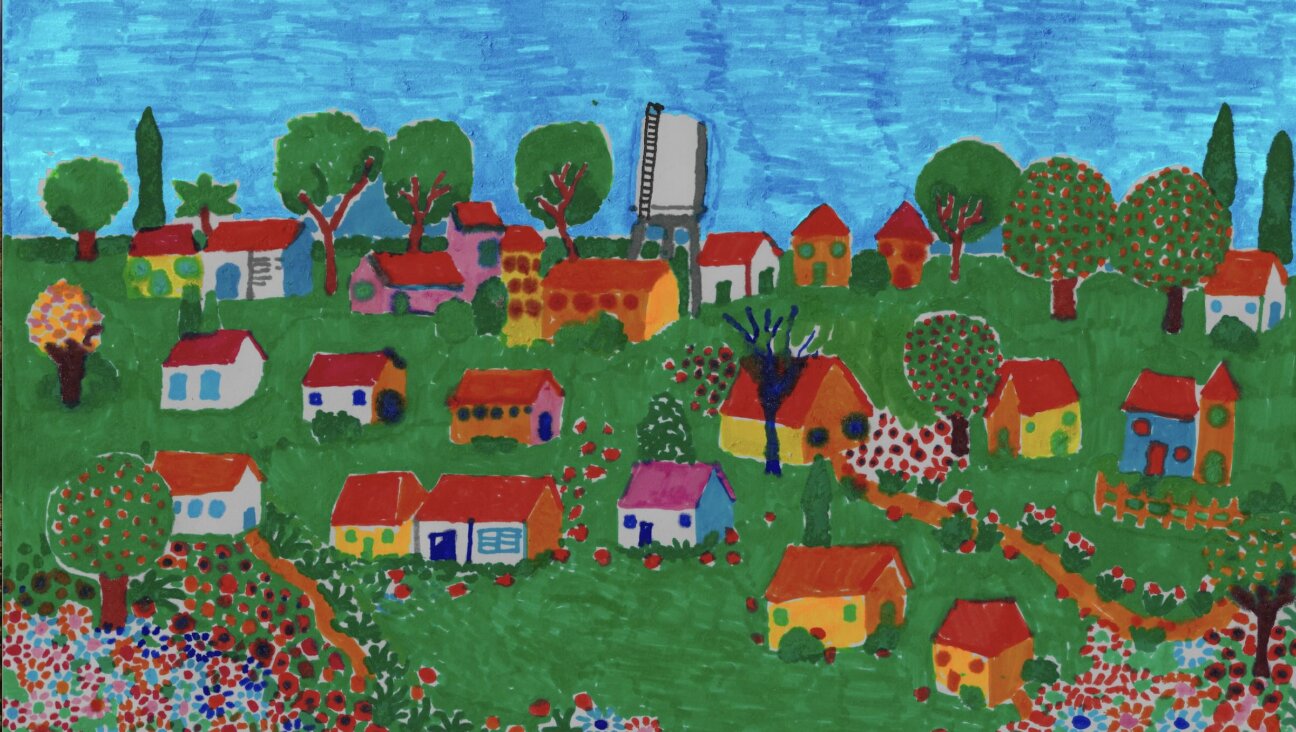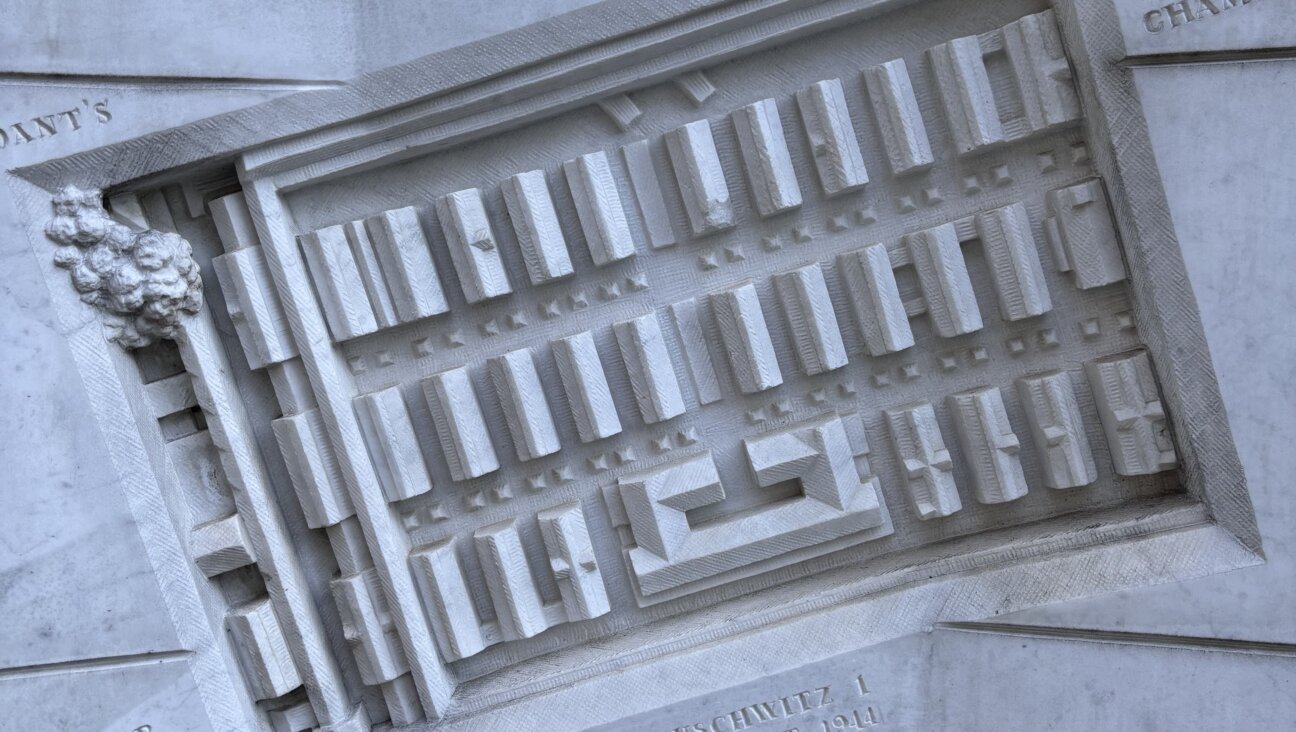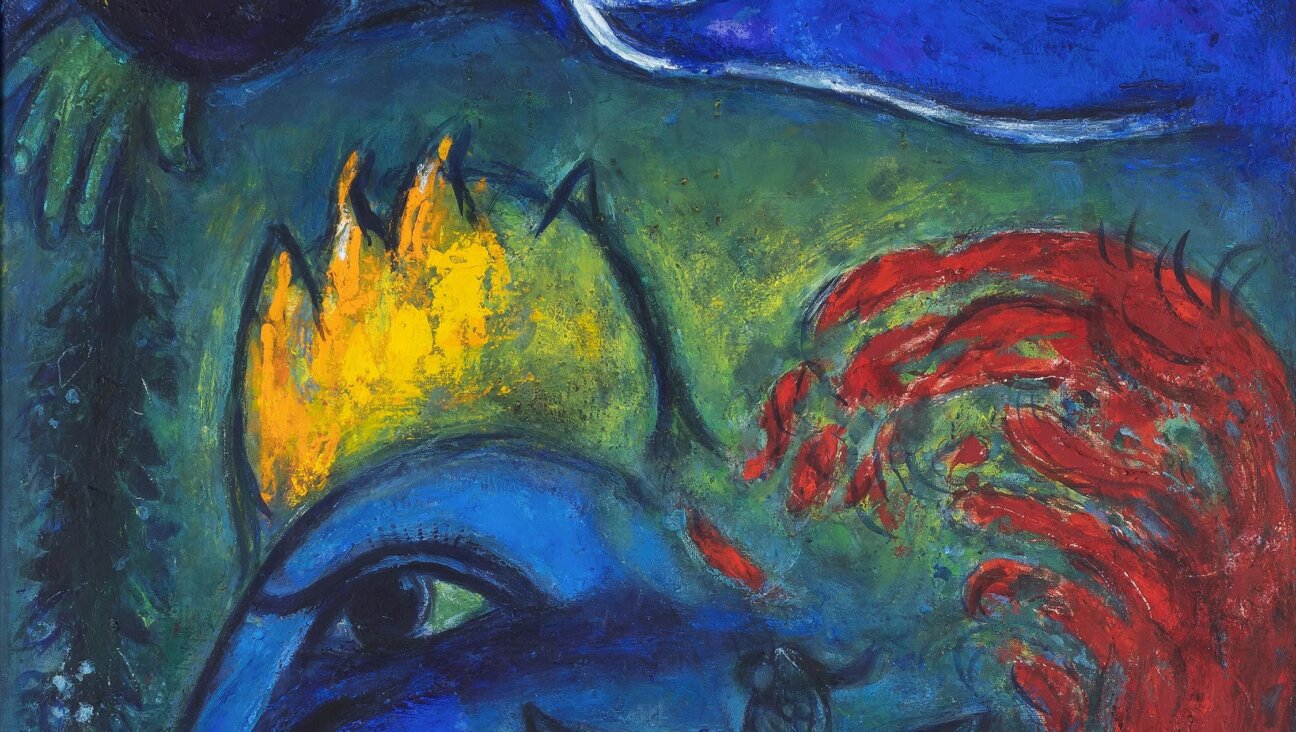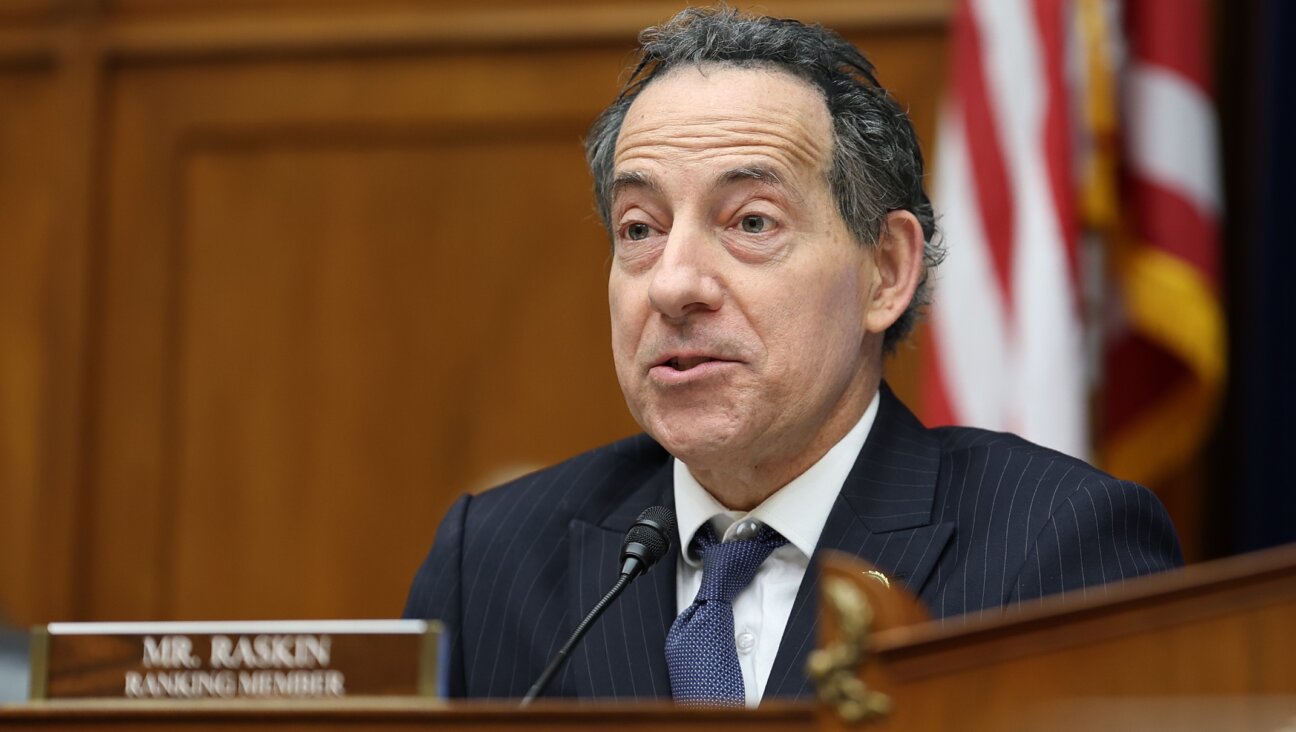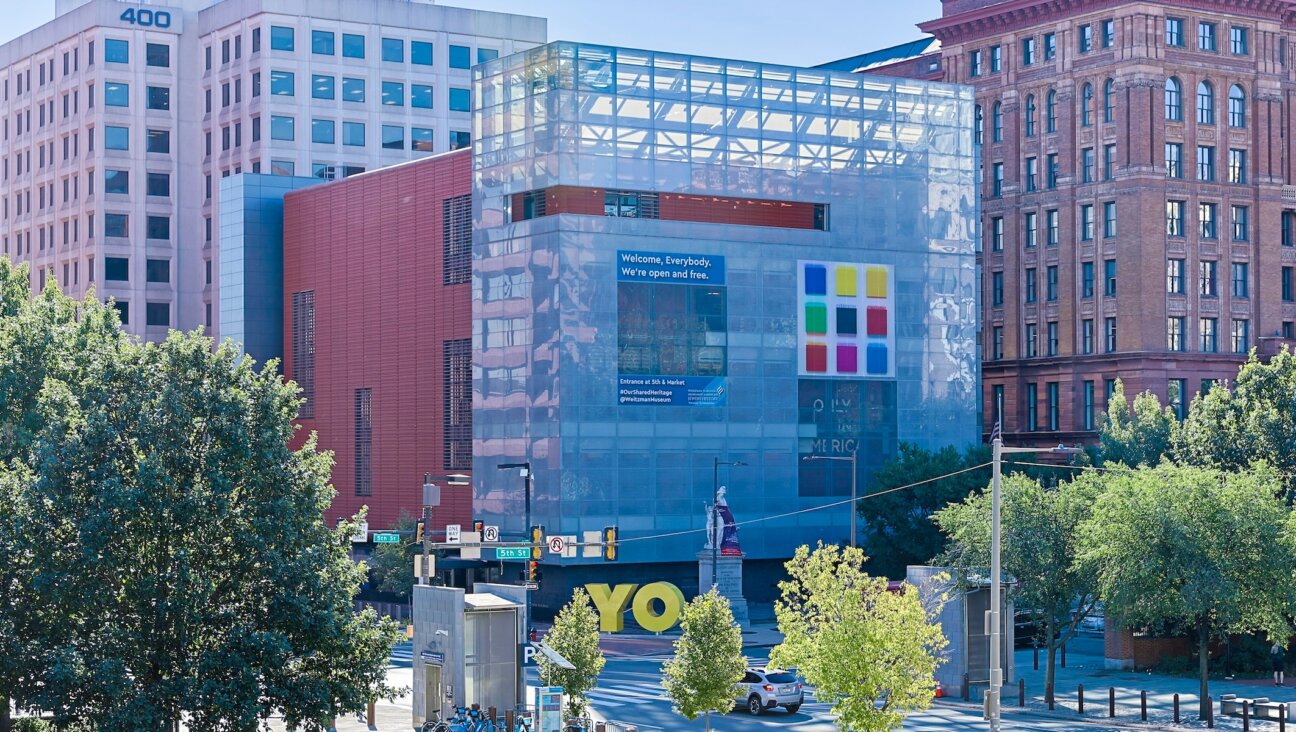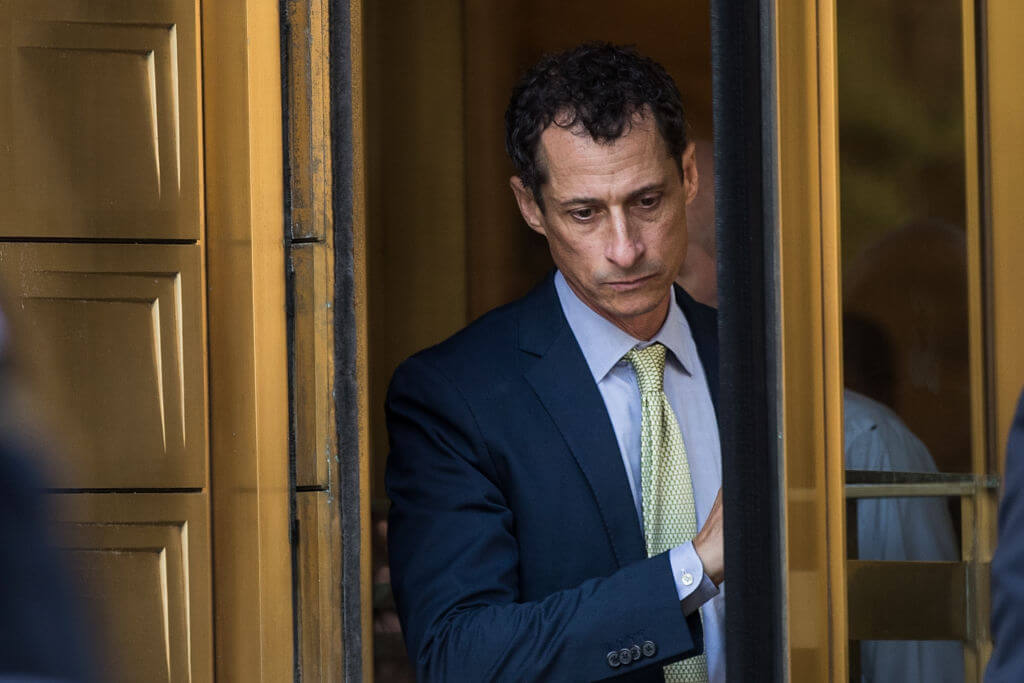Käthe Kollwitz: Artist of the resistance

Black Anna Image by Getty Research Institute
*This is the fourth in a series of stories about the work of Käthe Kollwitz and how it influenced artists, activists and collectors like Dr. Richard Simms, part of whose collection is being exhibited by the Getty Center in Los Angeles. You may find the previous articles here, here and here.
In 1903, working with a pencil and chalk on a piece of blue-green paper, a 36-year-old Käthe Kollwitz drew a revolutionary named Black Anna. Kollwitz traced the commanding tilt of her body with long black lines. She shaded in large hands that Anna waves like banners to lead a farmers’ revolt against feudal tyranny.
The drawing came to be owned by Erich Cohen, who made New York his refuge from the Nazis and became the president of A. Goodman & Sons, whose egg noodles, matzos and other good things were staples for growing Baby Boomers. After him, the drawing was owned by Dr. Richard A. Simms, an African-American raised in New Orleans in the Jim Crow era who became the world’s leading private collector of Kollwitz’s art.
In 2016, Simms placed his collection of prints, drawings and other material giving a panoramic view of Kollwitz’s enduring legacy as a graphic artist with the Getty Research Institute (GRI), part of the J. Paul Getty Center in Los Angeles. The 720 items listed in the newly completed on-line catalogue of the collection include art works and various printed matter by other artists in her world. Now, big posters of Anna on the Getty campus lead visitors to a just-opened exhibit drawn from the collection.
It includes the original drawings and various kinds of prints that reveal Kollwitz’s painstaking process, and what one curator called “a chance to look into Dr. Simms’s mind as a collector.”
“Käthe Kollwitz: Prints, Process, Politics ” will run until March 29, after which a group of works from the Simms Collection will become part of a different Kollwitz show at the Art Institute of Chicago, which will stress her role as an activist. The LA show emphasizes the steps through which she worked on the imagery that defined her — infant mortality, economic oppression, revolution, portraits of herself in Socratic self-study — with more than 50 of her most important works on the GRI’s walls.
The drawings and prints come with digital studies on screens of her work methods; a short 1923 documentary gives viewers a rare glimpse of her warm smile.
The GRI, with its separate curvy building, belongs to a group of organizations under the Getty umbrella. It is the center’s main repository for prints and drawings and a large archive of materials that open windows into art through centuries.
Marcia Reed, the GRI’s chief curator and overseer of its over 30,000 graphic works from around the world, described the Simms trove as the largest group of such pieces by a modern European artist of Kollwtiz’s stature to land at the Getty. And Louis Marchesano, who curated the show and oversaw the GRI’s book about the Simms collection, called it “a turning point in the history of the Getty’s collection (of works on paper).”

At the Getty: “Käthe Kollwitz: Prints, Process, Politics” is currently running at the Getty Research Institute in Los Angeles. Image by Allan M. Jalon
The GRI is also finishing a two-year project of creating a detailed on-line description of the full Simms collection for scholars and others who want to dig below the surface. A few taps on a keyboard can pull up Black Anna. There, with dissecting clarity, are the chalk marks with which Kollwitz made her hands.
A list tells who owned works before Simms. One can trace which belonged to the cache of 121 Simms bought directly from the Kollwitz family, a group acquired all at once that became the cornerstone of his collection. Among the names of former owners is that of Salman Schocken, a German-Jewish business tycoon recalled today as the publisher of Franz Kafka in English.
On December 2, the 93-year-old Simms was applauded at the show’s opening reception and quietly observed as others looked at art he’d bought over four decades. Asked for his impressions, he praised Marchesano and his GRI colleagues for exhibiting “some of the most important pieces.” But his face only came fully to life when he announced that he’d just bought another Kollwitz.
It is one thing to know that this show was conceived as a display of the collecting with which Simms followed Kollwitz’s restless intentions through drawings, proofs, working proofs and completed images.
It’s completely different to see how that searching looks on gallery walls.
Beyond self-portraits and her sculpture, Kollwitz knew two main units of inspiration — print cycles that told dramatic stories and individual prints that belonged to those cycles, of which she made five. She could work on a single print for years. Entering the show, side by side, we see a print Kollwitz rejected for the first sheet, or panel, of her first six-image print cycle, called “A Weavers’ Revolt.”
The cycle is about a 19th Century revolt by fabric workers, and the GRI shows two versions of the first image, both of which reveal the deprivation the weavers faced. Only the name of the piece — “Not,” or “Need” — did not change between Kollwitz’s initial print and the one she finally used.
She produced the first effort as a metal etching — but turned to lithography, which is done with a special crayon on stone. Other artists have studied Kollwitz for her understanding of how different media affect a viewer.
The GRI’s book about the Simms collection goes into why Kollwitz changed print forms and the change in the image itself from a more restrained one of a woman who sits alone beside a monstrous dark loom to a mother gripping her head as she watches her child die — from hunger, most likely.
The first gallery includes a self-portrait in which the artist stretches open an eyelid with a finger and looks both worn out and insistently observant.
Nearby, the documentary also shows her making a charcoal drawing, a classic Kollwitz: Children gripped by harrowing extremes of fear cling to a mother who looks like she’s being pulled towards an unstoppably dangerous fate. Kollwitz sketches them in front of the camera with quick facility, affixing the black dots of a boy’s horrified eyes with a skilled, matter-of-fact stab of her charcoal, sweeping her arm up and down as she strokes in black shadows that convey the pressure on the family.
Her fluid physical movement embodies a technical facility that took her with ease into the farthest corners of skill her work required. Kollwitz, we learn by watching her, was a natural who placed no limit on the sacrifices she made to fulfill her goals.
We see three versions — a preparatory drawing and two prints — of “Frau mit totem Kind,” “Woman with Dead Child.” The subject is a woman who, in a state of mad grief, holds her child’s corpse over her crossed legs.
Kollwitz drew the image with black chalk and brighter highlights on gray paper. Her prints formed with techniques that included line etching, dry-point and soft ground. The final print roils with a grieving darkness.
Walking through the first sections of this show quickly, without looking closely at the work for stretches, you might think that many of Kollwitz’s revisions are repetitive, like Andy Warhol’s when he placed Campbell Soup Cans in a stack or a grid. Slow down, and it becomes clear these repetitions are an order of decisive changes.
A large space is devoted to Kollwitz’s second print cycle, “Bauernkrieg,” or “Peasant War,” whose seven panels took her seven years to complete. She did it after reading a monumental book by Wilhelm Zimmerman, a liberal 19th Century politician and historian who gave unprecedented attention to an uprising by German farm laborers in 1525 in search of economic justice and self-determination. He called it the German Revolution.
The seven-print series starts with oppression. Along one wall, In keeping with the show’s emphasis on process, there are six preliminary prints Kollwitz made before her final one of two boys pulling the leaden weight of a plow. Then comes one of Kollwitz’s most shattering prints and a pioneering work by a woman artist about sexual violence — called “Vergewaltigt,” or “Rape.”
It shows a victim with her legs spread out amid fragile foliage that seems to suggest the act as a crime against fertility.
This is shown just before the print in which Black Anna first appears, a very tough old woman weathered by a life of field work, bending over a scythe, contemplating whether to lead her fellow farmers in action. In one version of the print — all share the same title, “Inspiration” — a god-like hero crouches behind her and presses her hands to a metal blade to urge her on.
In Kollwitz’s final effort at the print, the mediating muse is gone, and she’s left to inspire herself.
Next, in “Arming in a Vault,” farmers mass and gather weapons, surging out of a dark chasm in the earth. We see two print versions of them, weapons in their hands. In one, a black darkness opens to a bone-colored cave-like depth. The other glows with an orange tinge, a use of color as rare from Kollwitz as a smile. This experiment she rejects.
In the pivotal, fifth print, Black Anna steps into the breach, lifts her hands high with her back to us so the viewer also feels called to join the farmers. They sweep forward in a rage so furious they look like the sideways flames of a California wildfire blown by a furious wind.
It went badly, the historical revolt that swallowed over 100,000 peasants’ lives, and Kollwitz illuminates the outcome in a sixth print called “Battlefield.” This must be Anna, again, grimly bent and evoking Bertolt Brecht’s Mother Courage. She wanders in a field of slaughtered bodies at night, shining a lantern over the head of a fallen rebel.
The seventh and last work is “The Prisoners,” in which rebels stand shackled, defeated.
Beethoven, asked once what it took to be a good composer, is said to have answered: “It’s easy. You just always have to know what to do next.”

‘Charge:’ In this line etching, dated 1902-03, Kollwitz depicted a scene of rebellion. Image by Getty Research Institute Los Angeles
It wasn’t easy for him. It wasn’t easy for her. You can almost hear her repeatedly asking herself the creative question: What if?
What if I cut out that woman standing in the corner of the field, who distracts from the plowing boys who lunge almost parallel to the earth with Sisyphean effort?
What if I get rid of the mythic figure whose presence weakens the effect of Black Anna’s decision by siphoning off my focus on her responsibility for it?
Because works on paper are extra-sensitive to light, removing them from the closed flat cases in climate-controlled vaults (fire-proof in the Getty’s case) is risky. That explains why the GRI’s Kollwitz-dedicated spaces are bathed in a clear but moderate light.
The glow falls on a wall holding six exploratory drawings and prints in which her hunt for answers to her self-challenging questions turned painfully frustrating as she worked to honor the murder and mass mourning of Karl Liebknecht.
Liebknecht was a leader of the German communist party who took a lonely stand against Germany’s entrance into World War I. He was assassinated on January 15, 1919, by right-wing para-militarists amid the German proletarian uprisings of 1918-1919. The revolt was crushed by the Freikorps, volunteers of units of the German army that held together after Germany’s defeat in World War I, the early forerunners of the Nazis.
Freikorps officers murdered Liebknecht on the same day they tortured and killed Rosa Luxemburg, a Jewish woman who was one of the leading revolutionary intellectuals of the 20th Century.
Liebknecht, who was not Jewish, worked closely together with her in Leftist politics.
“Treacherous and appalling murder of Liebknecht and Luxemburg,” Kollwitz wrote in her diary entry for January 16, 1919, the day after the killings.
The Liebknecht family asked Kollwitz to create a memorial image of him, and she went to the morgue and made a drawing of his face.
It’s here — the spare, pulsing sketch Kollwitz made as she sketched Liebknecht’s angular forehead, thick mustache and squarish chin.
The artist modeled her approach on religious imagery showing a group of believers gathered around the martyred Christ.
She struggled, and text on the wall translates the critiques she wrote beside the images: “The man to the left is etched better. The man crying, etched to the right, good.”
We see her efforts to match horizontal and vertical forms that create the scene, to achieve the piercing white of the winding sheet in which the body is shown tightly wrapped.
She pushed herself through the work as a drawing, an etching, a lithograph, and remained unhappy with all of them. On June 24, 1920, Kollwitz visited an exhibition that included woodcuts by Ernst Barlach — a sculptor in wood, print-maker and writer of allegorical plays. She wrote in her diary after getting home: “Today, I looked at my lithographs and saw that almost all of them are not good. Barlach has found his way and I have not yet found mine.
“Should I really make a completely new attempt like Barlach and begin with the woodcut?”
She mastered Barlach’s favored medium quickly. She worked to gain for her ideas the unique quality that wood, gauged and cut and inked by human hands, can project of earth-rooted but civilized expression. She brought together the directness of folk art and the Modernist anxiety over moral loss in a way that was both populist and sophisticated.
She brings us to the core of the mournful resilience in the faces of working class followers who stand over Liebknecht’s body.
She titled her woodcut, plainly, “Memorial Sheet to Karl Liebknecht.”
With the woodcut, Kollwitz opened a door to years of work with the medium. The exhibit features all of the woodcuts from “Proletariat,” her smallest graphic suite, a 1926 work whose three devastatingly intense prints are titled, “Unemployed,” “Hunger,” and “Child Mortality.”
There are also key woodcuts from a series called “War,” and pieces from “Death,” her final series, lithographs done after the Nazis took power.
The move to woodcuts was probably the most important expressive shift of her career. She focused on them, while not giving up other print-making methods completely, over the next decade. The show devotes most of a separate space to her woodcuts. Their raw, sculptural force portends Kollwitz’s next big move, to sculpture. (There’s none of it here. Simms did not collect Kollwitz’s sculpture. He likes Barlach’s more, he’s told me, but didn’t buy it.)
Jay Clarke, the curator of the Chicago show set to open May 30, has known Simms since her student days at Brown University, writing a thesis that was partly an examination of Kollwitz’s work. She has made the same climb as Louis Marchesano and many other graphic arts insiders, up the stairs to the rooms above Simms’ s pre-retirement dentistry offices in Harbor City, for a long look at prints and drawings that he pulled out.
I recently ran into her at the GRI, where she attended the opening of the Kollwitz show. The next day, she joined Marchesano to look at works both in the show and held in the GRI’s vaults to pick pieces for the revised (how appropriate!) selection that will be seen in Chicago. The Art Institute’s walls, according to Clarke, will consist of 85 pieces, about 35 more than appear in Los Angeles.
The two back-to-back shows represent the biggest surge of Kollwitz consciousness in America since a major 1992 survey of her works on paper at the National Gallery of Art, in Washington, D.C.
The Chicago show will combine works from the Simms collection and others in the Art Institute’s holdings, said Clarke, who said the show will demonstrate Kollwitz as “an artist who responded to the events of her day,“ as “a political activist,” adding that “The show will look at her entire career through this lens while also considering her approach to process and technique.”

West Coast Meets Midwest: Jay Clarke, curator of the Chicago Kollwitz show and Louis Marchesano, curator of the L.A. Kollwitz show. Image by Allan M. Jalon
The show’s focus and its title, conjuring images of pussy hats and anti-Trump demonstrations, could not be more timely:
“Käthe Kollwitz: The Art of Resistance.”
The GRI is considering future shows that would explore the deeper regions of the collection, possibly a more general look at German Modernism that would roll out some other artists Simms collected.
The on-line GRI catalogue divides his gift — actually, the Simms-GRI deal was half-gift, half a payment to him of $5 million — into two sections, one for Kollwitz works and the other for art works and materials related to about 30 other artists.
Some of the other artists are relatively well-known in this country, but a number deserve wider recognition. The history that many of the others have in common with Kollwitz is that they matured with her across the line the year 1900 placed between two centuries. They lived through the First World War and the rise of cultural Modernism. In some cases, they also saw the coming of Hitler and the Second World War.
The artists include Max Lieberman (1847-1920) an important German-Jewish Impressionist who encouraged others in the German art establishment of the late 19th Century to recognize Kollwitz.
Max Klinger (1857-1920) probably had the most decisive impact on the young Kollwitz of any other artist, with an essay he wrote asserting the power of print-making as an art form. He was a magical realist, a dreamer-while-awake original with a startling sense of what goes on in the back of the mind.
Works by other artists in the Simms collection include a 1931 watercolor by George Grosz (1893-1959) who came to the United States to escape the Nazis, and which people who know of it regard as one of the collection’s best pieces.
“At the Café,” as the painting is called, shows an older man, presumably a Weimar-era profiteer, and a young woman who he is treating to a drink, and who knows what his intentions might be? Ever-angular in his world view in those days, Grosz lets you imagine they are as romantic as you wish.
Ludwig Meidner, a German-Jewish artist who survived the Third Reich in England, was a powerfully imaginative artist who may get some more of the attention he deserves, thanks to the Simms holdings at the GRI. Born in 1884, he was a soldier in World War I, an experience that left him devastated. After the war, he became Orthodox, a move to religious observance that he credited with saving his life.
He erupted into apocalyptic visions for a time in the 1920s, after falling ill during a Berlin heat wave, making paintings that pictured a society rushing toward doom, with towns flooded by crowds running mad as if an alien invasion had set upon them.
The artist, who lived until 1966, by one account, would work all night long in his Berlin studio, drawing “Old Testament prophets with a scroll-pen on large sheets of paper.” One of Meidner’s prints is titled, “The Prophet.” It’s not clear which prophet it is. He wears a beard, kneels on top of mountain, holding up his hands and talking to someone higher.
If the Getty puts on a broader exhibit of modern German art, maybe a Meidner prophet will grace its walls, an instigator not of revolution but revelation, beckoning visitors to see more.
A message from our Publisher & CEO Rachel Fishman Feddersen

I hope you appreciated this article. Before you go, I’d like to ask you to please support the Forward’s award-winning, nonprofit journalism during this critical time.
We’ve set a goal to raise $260,000 by December 31. That’s an ambitious goal, but one that will give us the resources we need to invest in the high quality news, opinion, analysis and cultural coverage that isn’t available anywhere else.
If you feel inspired to make an impact, now is the time to give something back. Join us as a member at your most generous level.
— Rachel Fishman Feddersen, Publisher and CEO







